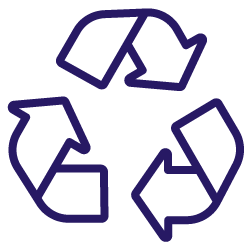Marketing trends, strategies, and best practices can change overnight, so is there even such a thing as evergreen content?
In the traditional sense of “set it and forget it,” no.
While optimization should be a major element of any content marketing process, there are ways you can make your content more evergreen, meaning to help keep it relevant with minimal changes.
To help, I’ve put together a few best practices to ensure your content performs stronger for longer.
What is evergreen content?
Evergreen content is a phrase widely used in the marketing world, but it’s not necessarily a one-size-fits-all formula. It’s entirely subjective. Defining content as evergreen depends on what that content means for your business and how it fits in your marketing strategy.
For example, evergreen is often used to describe SEO components, especially with long-form blog articles. But other types of content can also be considered evergreen, including things like:
- Product and service pages
- Ad campaigns
- Imagery
- Landing pages
- Email nurturing sequences
- Whitepapers
- Case studies
- Videos
- Events
- Social media content
- Help guides
- FAQ
The list goes on—almost any type of content can be evergreen. So, what does that mean?
Personally, I’d define it as any content that has the long-term goal of supporting your business growth with minimal changes needed over that time. It’s content that remains relevant as the world changes.
This can be difficult in today’s fast-paced environment, which is why I use a criteria to help define evergreen content:
- Primary purpose — does it add something to your marketing strategy? Is it created for a specific channel for a specific campaign type? You want to avoid creating content for content’s sake.
- Target audience — is it created for a specific audience rather than just “everyone”? Ideally, an audience you want to generate or capture demand from over the long run.
- Ease of repurpose — can the content be easily repurposed from the primary channel into secondary channels?
- Related KPIs — have you identified KPIs like traffic, engagement, and conversions? This won’t happen overnight, but can be optimized over time. This is one primary reason you still need to optimize evergreen content.
- Content longevity — can content remain relevant for longer time increments? Trendy or seasonal content loses value quickly, while evergreen content is meant to last for at least multiple months, if not years.
- Long-term channel ROI — does it continually generate ROI for long-term marketing efforts? The more you can use content, the more evergreen it’s considered.
If you answered yes to the above for a blog, image, case study, or even an ad campaign, I would consider it evergreen. Content that isn’t will need to be updated and refreshed more often.
5 Tips for creating evergreen content that performs for the long run
In the dynamic landscape of digital marketing, the creation and maintenance of evergreen content can help support successful business longevity and scalability.
But how do you create evergreen content that stands the test of time?
I’ll walk you through the key principles for creating evergreen content that stay relevant over the years, such as:
- Defining your content’s purpose
- Focusing on long-term interest topics
- Filtering your target audience
- Angling topics for multi-channel repurposing
- Optimizing it over time
1. Define your content purpose
Always take the time to clearly define the purpose of each piece of content. Evergreen content should be used on a primary channel, as part of a larger content marketing strategy. It shouldn’t be created as a standalone piece.
Don’t base it on random ideas or trends. The static content piece is meant to be read and engaged with for as long as possible.
An example is with a BoFu SEO product or service page, such as the one below created by my international marketing agency, AS Marketing.

Source: AS Marketing
Here, you can see how we incorporated SEO into our service pages. The focus was on incorporating BoFu keywords like, “multilingual SEO agency,” “multilingual PPC agency,” and “multilingual marketing agency.”
The BoFu keywords were meant to be largely static to maximize longevity. Because we targeted this similar cluster, it has also enabled us to rank for “international marketing agency.” They have continued to rank well enough to generate leads that have turned into new projects.
2. Focus on long-term interest topics
Trendy or seasonal topics garner a lot of interest fast, and lose it even faster.
An evergreen content strategy focuses on topics that your audience cares about on a regular basis. These topics will be connected to their pain points, your product/service USPs, and content pillars.
An example of a primary brand theme is the pillar page for the GDPR Compliance Database for a software development company called Altova.

Source: Altova
They recognized their target audiences’ need for GDPR compliance and became a subject matter expert.
Now, they’re a trustworthy source of information related to GDPR, which further boosts their SEO performance. Although the content itself may change as GDPR laws adapt, the database itself is evergreen.
3. Filter your target audience
Evergreen content should always target a specific persona for a specific purpose. It’s one of the best ways to make ads more effective over time.
An example is the LinkedIn ad for CFOs below. You can see that it filters by job title, location, company size, and profile language

This strategy enables you to create a multi-stage ad campaign targeting ToFu, MoFu, and BoFu intents instead of just a basic CTA like a whitepaper download. In the example above, it’b be beneficial to add employee boost ads, especially in the ToFu stage.
Choosing what channel to launch an ad can also make an impact.
For example, ad fatigue on Linkedin is far less than Facebook, so Linkedin campaigns can often run for longer after being optimized. A good evergreen LinkedIn ad has the potential to run for an entire year or longer with minimal optimization.
4. Angle topics for multi-channel repurposing
When it comes to making something evergreen, consider different ways you could adapt the content over time. The more you can repurpose something, the longer it can perform.
This is much more efficient for your content strategy, as you won’t have to consistently make new content from ground zero.
Once you’ve got your content, you can adapt it for multi-channel success. For example, 73% of marketers worldwide use organic social media to promote content, 53% use email marketing, and 51% use paid social ads. The more you can use your content, the bigger the ROI.
[Case Study] How GroupM Turkey helped IKEA increase their non-branded organic traffic
So, let’s say you host a webinar, record it, and want to promote the repurposed recordings. You could create an evergreen landing page for the webinar, then share it on social media. With strategic SEO, it will get organic coverage, but you can extend the reach with paid ads. You could also send the recording via email and drip feed related content afterward for nurturing.
To take things even further, write a blog article about the webinar and embed the YouTube recording. Then, optimize the video for organic YouTube traffic and share it.
From one webinar, you’ve repurposed content for multi-channel sharing across four to five different platforms. That’s exactly what we did with the webinar on How to Harness the Power of Multi-Language SEO With Localization.

Source: AS Marketing
After recording the above and publishing it on YouTube, Clearscope followed up with a nurture email. This is useful, because it can continue to be posted on LinkedIn snippets for new audiences to see.
Essentially, the content can live on for years by being repurposed. Since repurposing often takes minimal effort in comparison to new content strategies, I would also consider this a definition of “evergreen.”
5. Optimize it over time
Evergreen content is meant to last, but it still needs to be optimized and adjusted. The point is that it requires less maintenance and resources compared to quick conversion content that’s only used for a few weeks.
With the right optimization strategies, evergreen content should be live and in use for years.
Optimize UX/UI based on engagement data, improve related KPIs through conversion optimization, and compare performance to the rest of the marketing strategy. Long-term optimization is what has the biggest impact, but it’s still important to consider the contribution of ROI to the entire strategy.
It’s important to remember that ALL content needs to be optimized to continue performing well, even when it’s evergreen.
Build evergreen content, build for long-term content marketing success
If you want to achieve long-term content marketing success, one thing is clear: You need to build evergreen content. By adhering to some of the best practices above, your content will be able to weather the shifting tides and trends of the marketing industry, while contributing to your company’s success.


